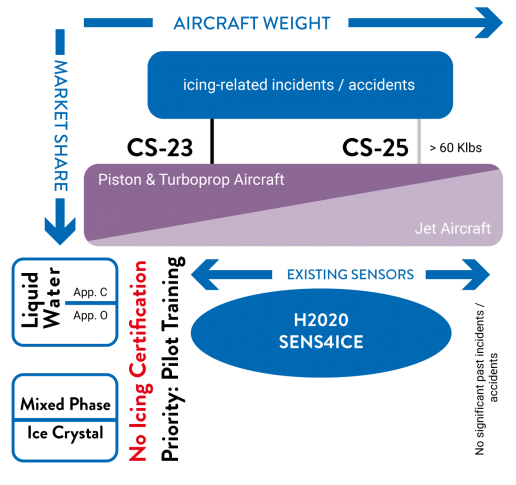Modern airplanes are well equipped to cope with the most common icing conditions, which are defined in Appendix C of 14 CFR Part 25 (formerly known as FAR 25) / CS-25. However, some conditions containing Supercooled Large Droplets (SLD) have been the cause of severe accidents over the last three decades. It has become clear that improving safety is important for these icing conditions.
Consequently, authorities addressed these safety concerns by issuing new certification rules under Appendix O of 14 CFR Part 25 (formerly known as FAR 25) / CS-25 to ensure that future airplanes remain controllable in these conditions and can exit safely upon detection.

The SENS4ICE project directly addresses
this need for reliable detection and discrimination
of icing conditions.
SENS4ICE project introduces a novel approach of hybridisation of different detection techniques.
In the proposed hybrid system, the direct sensing of atmospheric conditions and/or ice accretion on
the airframe is combined with an indirect detection of ice accretion on the airframe by monitoring
the change of aircraft’s characteristics.
SENS4ICE will address the development, test, validation, and maturation of the different detection principles, the hybridisation - in close cooperation with regulators to develop acceptable means of compliance - and the airborne demonstration of technology capabilities in relevant natural icing conditions.

